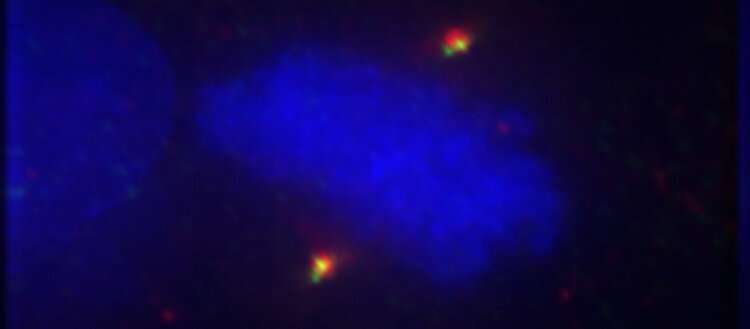
UNIGE researchers have discovered a new combination of drugs that is effective in fighting cancer cells without affecting healthy cells.
The fight against cancer involves eradicating cancer cells but current treatments inevitably have negative consequences on healthy cells. Patients often develop a resistance to the drugs and suffer from side effects due to the doses used in the treatments. How can this two-fold problem be managed? Scientists from the University of Geneva (UNIGE), Switzerland, analyzed 200 combinations of different anti-tumor drugs in an attempt to reduce the doses. They employed a new technique to test the impact of a combination on a cancer cell and healthy cell simultaneously. The researchers discovered a highly promising mix of four components, called C2, that can kill tumor cells while leaving healthy cells undamaged. You can read about these very hopeful results in the journal Cancers.
The drugs that attack tumors have to be aggressive for them to be effective. The balance between destroying cancer cells and the collateral damage inflicted on healthy cells is, however, a constant challenge. High doses of an anti-cancer drug can cause two main types of damage: progressive resistance to the drugs as the body acclimatizes to the massive doses; and unwanted side effects on the patient’s healthy cells. How, then, can we combat cancer without harming the patient? “The main objective is to reduce the doses of the drugs so we can avoid resistance,” explains Patrycja Nowak-Sliwinska, a professor in the Institute of Pharmaceutical Sciences of Western Switzerland and at UNIGE and in the university’s Translational Research Centre in Onco-Haematology (CRTOH). “That’s why we’re creating new formulas made up of several low-dose treatments that will help us achieve our goal without inducing any resistance.”
Testing new formulas simultaneously
The UNIGE researchers focused on ten substances used to fight cancer, producing some 200 possible combinations. “We used a method we developed in our laboratory to test these different combinations simultaneously in vitro on a cancer cell and on a healthy cell. The aim was to directly compare the effects of the treatment on the two types of cells,” continues professor Nowak-Sliwinska. “We were able to eliminate the formulas that didn’t destroy the diseased cells together with those that also had an impact on the healthy cells.”
Thanks to this simultaneous validation technique, the UNIGE researchers identified the most effective combinations with the fewest possible side effects on healthy cells, with one in particular standing out: C2.
Highly promising new cancer treatment
C2—which consists of four products (tubacin, CI-994, erlotinib and dasatinib) – is developing a new and highly promising mechanism of action. “During our in vitro tests, we found that C2 killed up to 20 times more cancer cells than other combinations, while sparing healthy cells,” explains Patrick Meraldi, a professor in the Department of Cellular Physiology and Metabolism in UNIGE’s Faculty of Medicine and at the CRTOH.
The special characteristic of C2 is that it targets the supernumerary centrosomes that are only found in tumor cells. “Each cell is equipped with two centrosomes, organelles that allow it to divide in two by each ‘pulling’ one half of the cell,” explains professor Meraldi. As for the cancer cells, they have more centrosomes that tug the cell in three or four directions during its division, which leads to cell death. To prevent this, the cancer cells group the centrosomes into two poles. “C2 blocks the grouping, causing a cell death specific to the tumor cells with supernumerary centrosomes, while leaving the healthy cells unharmed,” continues the Geneva-based researcher.
Source: Read Full Article
